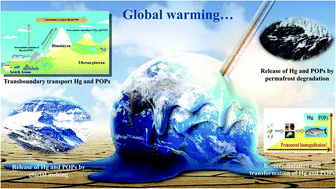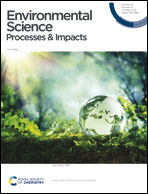Impact of global warming on regional cycling of mercury and persistent organic pollutants on the Tibetan Plateau: current progress and future prospects
Abstract
Global warming profoundly affects not only mountainous and polar environments, but also the global and regional cycling of pollutants. Mercury (Hg) and persistent organic pollutants (POPs) have global transport capacity and are regulated by the Minamata Convention and Stockholm Convention, respectively. Since the beginning of this century, understanding of the origin and fate of Hg and POPs on the Tibetan Plateau (TP, also known as the third pole) has been deepening. In this paper, the existing literature is reviewed to comprehensively understand the atmospheric transport, atmospheric deposition, cumulative transformation and accumulation of Hg and POPs on the TP region under the background of global warming. The biogeochemical cycle of both Hg and POPs has the following environmental characteristics: (1) the Indian summer monsoon and westerly winds carry Hg and POPs inland to the TP; (2) the cold trapping effect causes Hg and POPs to be deposited on the TP by dry and wet deposition, making glaciers, permafrost, and snow the key sinks of Hg and POPs; (3) Hg and POPs can subsequently be released due to the melting of glaciers and permafrost; (4) bioaccumulation and biomagnification of Hg and POPs have been examined in the aquatic food chain; (5) ice cores and lake cores preserve the impacts of both regional emissions and glacial melting on Hg and POP migration. This implies that comprehensive models will be needed to evaluate the fate and toxicity of Hg and POPs on larger spatial and longer temporal scales to forecast their projected tendencies under diverse climate scenarios. Future policies and regulations should address the disrupted repercussions of inclusive CC such as weather extremes, floods and storms, and soil sustainable desertification on the fate of Hg and POPs. The present findings advocate the strengthening of the cross-national programs aimed at the elimination of Hg and POPs in polar (Arctic, Antarctic and TP) and certain mountainous (the Himalaya, Rocky Mountains, and Alps) ecosystems for better understanding the impacts of global warming on the accumulation of Hg/POPs in cold and remote areas.

- This article is part of the themed collections: Atmospheric chemistry and POPs and Chemicals of Emerging Arctic Concern: Influence of Climate Change


 Please wait while we load your content...
Please wait while we load your content...